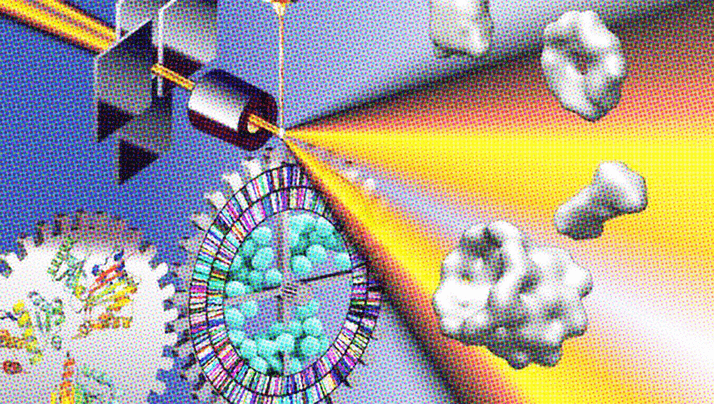
New structural information data has boosted SAS experiments with X-rays (SAXS) and neutrons (SANS). Developed by Robert Rambo, a scientist at the Lawrence Berkeley National Laboratory (Berkeley Lab) Physical Biosciences Division, and John Tainer of Berkeley Lab’s Life Sciences Division and the Scripps Research Institute, the approach offers a 20-fold reduction in data collection time and provides quantitative measurements of flexible macromolecules. This means, Tainer says, that SAS will deliver “accurate and quantitative shape and assembly information, which provide a basis to annotate genome sequence function for biology”.
The inspiration behind the research was the desire to connect the huge potential of genome sequence data and its meaning for biology with the relatively unrealized capabilities of SAXS. “There is a rapidly expanding gap between sequence data and the structural data needed to provide mechanistic and predictive biology, despite key investments in structural biology and many advances including powerful synchrotron facilities. We realized that SAXS had the potential to be a true high-throughput structural technique that gives complete information on the ensemble of structures in solution under physiologically relevant conditions, even for highly flexible complexes,” Tainer explains.
Despite the ability of SAXS experiments to provide a complete set of electron pair distances – which provide structural information – the flexible nature of some macromolecules mean that traditional SAS analytics are unable to accurately use the full data set. Rambo estimates that 90% of the information is lost (1) and the risk of over-interpreting SAS data, and the subsequent generation of unreliable models, veiled the true value of the approach. Tainer explains further: “Our paper (2) deals with two major needs that limited SAXS for structural biology. First, it gets directly at information from the SAXS experiments on flexible samples without modeling. And second, it defines the accuracy and resolution of SAXS data and models. The combined results provide much needed objective and quantitative assessments and avoid over-fitting the data.”
Rambo’s earlier discovery of an SAS invariant – the “volume-of-correlation” or Vc – was key in developing the new metrics. The value of an invariant is independent of how or where the measurement was performed. “Vc uses the full range of the SAXS data to tell us about shape and assembly in solution, even for highly flexible samples – and shape is information in biology. Molecular forces are strongly distant-dependent so macromolecular shapes must fit closely together to interact strongly enough to achieve their functions,” says Tainer.
The newly reinvigorated and reliable SAXS technique is likely to have wide-ranging impacts. According to Tainer: “Now that SAXS can reliably define protein, DNA and RNA shapes, interactions and assemblies, it can help define biological functions and annotate gene sequences. This has major implications for medicine, nano-materials, bio-manufacturing, responses to climate change, and development of biofuels”.
When asked, “What’s next?”, Tainer’s answer is clear: “Building upon these metrics to improve measuring flexibility and folding states in solution, and combining SAXS with other methods such as NMR. The SAXS data will helps to create models rather than simply acting as a filter to remove unsuitable predetermined possible models.”
Do you currently use SAXS (or SANS) analysis? We’d love to hear your views on this development and what impact you think it will have. Leave a comment below.
References
- http://newscenter.lbl.gov/news-releases/2013/04/25/new-saxs-molecular-analyses/ Robert P. Rambo and John A. Tainer, “Accurate assessment of mass, models and resolution by small-angle scattering”, Nature 496, 477–481 (2013). doi:10.1038/nature12070




